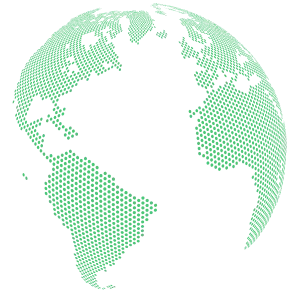In a world increasingly focused on sustainability, the origin of our raw materials is coming under greater scrutiny. Rubber, a versatile material used in a wide range of everyday products, is now in the spotlight. From (car) tires to mattresses to medical devices, rubber is indispensable.
To protect nature and halt ongoing deforestation, the European Union has introduced the EU Deforestation Regulation (EUDR). This regulation aims to eliminate products from European supply chains that contribute to deforestation and environmental degradation. For the rubber industry, this means subjecting its supply chains to strict monitoring and ensuring that rubber products are produced sustainably and with minimal environmental impact.
The regulation specifically targets companies that trade in any of the following seven commodities and their derivatives: soy, palm oil, cattle, cocoa, coffee, timber, and rubber. In this article, we delve into the role of rubber in our daily lives, the challenges posed by the EUDR, and how the industry is adapting in response.
The invisible everyday hero: Rubber is everywhere
Rubber is a true all-rounder, an integral part of our daily lives. Although it can be found in a wide range of products, it often goes unnoticed. Yet rubber plays a crucial role in many of the items we use every day.
When we think of rubber, tires are often the first thing that comes to mind—and for good reason. About 70% of the world’s natural rubber production is used to manufacture tires. However, rubber is also essential in a variety of other products that are indispensable in our daily lives, such as:
- Medical products: Protective gloves, medical tubing, and bandages.
- Consumer goods: Hair ties, yoga mats, balloons, and condoms.
- Household goods: Mattresses, gaskets, rubber rings, bathmats, and hot water bottles.
These everyday items have a significant impact on sustainability and the environment. When made from natural rubber, their production depends on a complex global supply chain that often leads back to the tropical rainforests where rubber is cultivated.
The EU Deforestation Regulation is now putting the entire supply chain of these products under scrutiny. The regulation mandates that only rubber grown without contributing to deforestation – meaning no forests are cleared to grow rubber – can enter the EU market. For the industry, this is a clear call to prioritize sustainability and rethink production processes. Companies must ensure that the origin of their rubber is verifiably deforestation-free.
EUDR and rubber: A rocky road to sustainability
The EU Deforestation Regulation (EUDR) sets new standards for sustainability, compelling the rubber industry and others to fundamentally rethink their production and supply chains. To ensure that rubber from deforested areas does not enter the European market. All stakeholders in the supply chain—from smallholder farmers to large industrial companies—must meet stringent requirements. The EUDR goes beyond previous environmental standards, requiring a fully transparent supply chain, which poses a particular challenge for rubber production in remote, hard-to-reach regions.
From plantation to shelf: How does rubber contribute to deforestation?
Rubber production is closely linked to deforestation in tropical regions. In countries such as Thailand, Indonesia, and Malaysia, valuable rainforest is often cleared to make way for rubber plantations. These plantations are typically monocultures, which reduce biodiversity and deplete soils. Additionally, they indirectly accelerate climate change by releasing the carbon stored in the cleared forests. As an alternative, transitioning from monoculture rubber plantations to mixed plantations with crops such as coffee could increase biodiversity and reduce the need for deforestation.
To comply with the stringent requirements of the EUDR, the rubber industry must implement comprehensive measures. These measures must cover the entire supply chain—from plantations in tropical rainforests to the finished products on European market shelves.
Beyond certification: The EUDR’s requirements
The EUDR sets a higher bar than existing certification standards. While various certifications are often the foundation of sustainability efforts, the EUDR’s requirements extend beyond them. It mandates full traceability of all rubber along the supply chain, necessitating precise documentation and continuous monitoring.
Certification alone is not sufficient to ensure compliance with the EUDR. However, certification can facilitate the implementation of EU regulations, as it is often associated with a more transparent supply chain. In order to achieve full transparency across the entire supply chain on top of this, companies can leverage software solutions to support the implementation of the regulation.
High-tech against deforestation: Innovative traceability solutions
One of the most effective ways to meet the requirements of the EUDR is through the use of advanced traceability technologies. Software solutions, such as the osapiens HUB for EUDR, allow companies to digitally map their entire supply chain and seamlessly trace the origin of rubber.
The osapiens HUB, osapiens’ platform solution, enables companies to collect and analyze data in real-time, ensuring that every step in rubber production complies with EUDR requirements. This technology employs cutting-edge tools like artificial intelligence and the Internet of Things (IoT) to efficiently integrate and analyze all information from rubber suppliers and distributors in a transparent manner.
By implementing such platform solutions, companies can not only meet EUDR requirements but also optimize their processes and save costs in the long run. Manual efforts are minimized, and fundamental data needs to be entered only once, similar to a tax return. Complete visibility and automated monitoring help identify and mitigate potential risks early, enabling timely action.
A Greener Future for the Rubber Industry
The EU Deforestation Regulation (EUDR) marks a turning point for the rubber industry. It challenges companies to make their production processes more sustainable while providing an opportunity to redefine the future of rubber through innovation and technological advances.
While achieving EUDR compliance is demanding and tests the entire supply chain, modern platform solutions like the osapiens HUB demonstrate that implementation is not only feasible but also advantageous. Companies that invest in transparent and sustainable processes today will not only ensure compliance but also position themselves as leaders in an industry increasingly driven by environmental responsibility.
The road to EUDR compliance may be challenging, but it leads to more sustainable and responsible rubber production.
About osapiens
osapiens develops innovative software-as-a-service solutions that enable companies to implement ESG requirements in a fast, automated and secure way. At the core is the osapiens HUB, an AI-powered cloud platform that creates compliance and transparency across the entire value chain.
With osapiens, companies master all ESG challenges: They identify risks, implement reporting obligations such as CSRD, EUDR and LkSG, and make their operations more sustainable.
osapiens was founded in Mannheim, Germany in 2018 and was awarded the German Founder Award in the “Rising Star” category in 2022. Today, osapiens is a leading provider of ESG software solutions and works with an international team of more than 300 employees for more than 1,700 customers worldwide.
Christian Feuring
External Communications Manager


